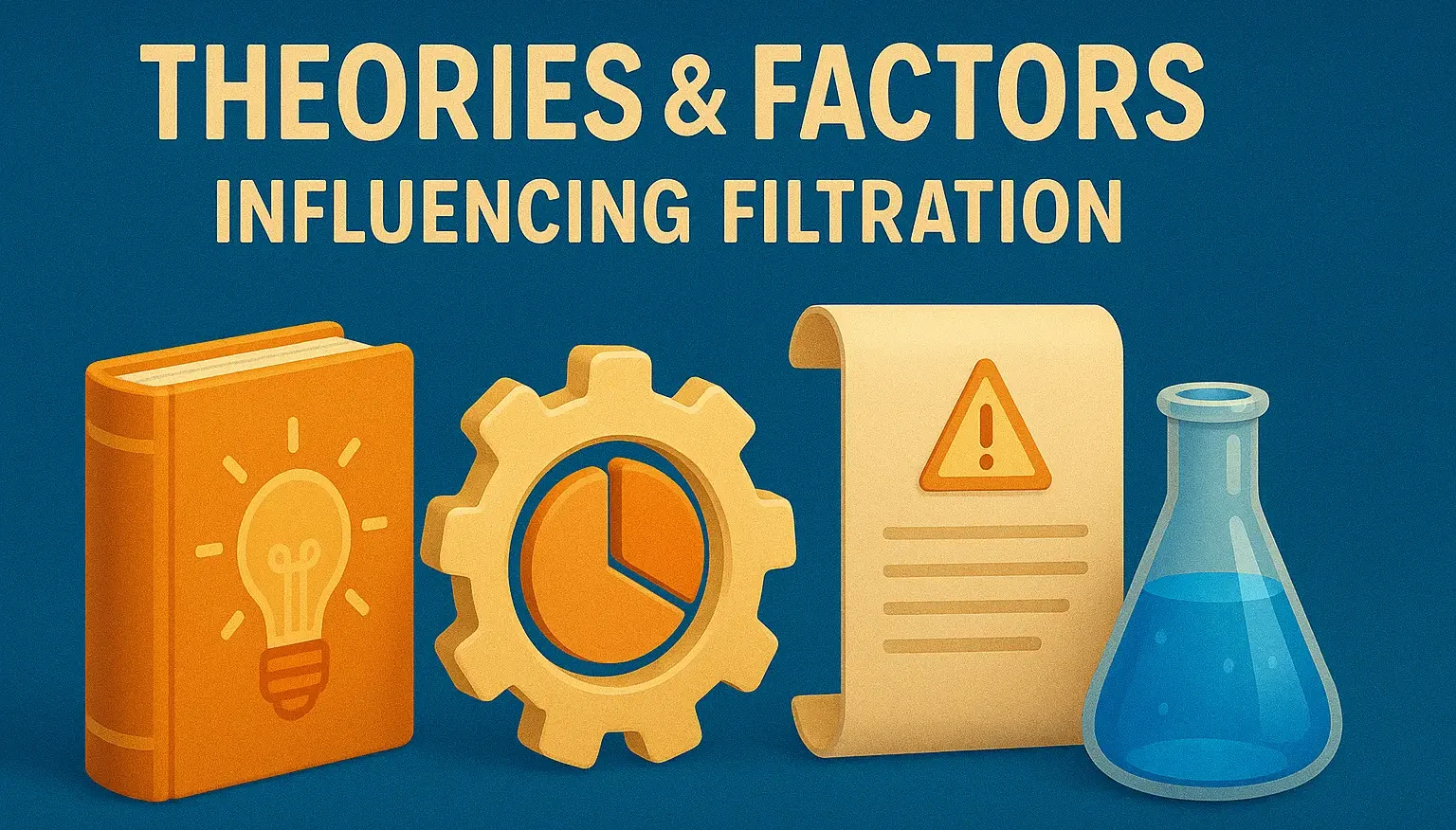Theories & Factors influencing filtration
- Factors influencing filtration revolve around separating solid particles from liquid or gas using a porous medium
Poiseuille’s Equation
- Poiseuille’s equation describes the laminar flow of a fluid through a cylindrical pipe, often applied to describe the flow through the pores of a filter medium.
- $Q = \frac{\pi r^4 \Delta P}{8 \eta L}$
- Where:
- Q = flow rate
- r = radius of the pore
- ΔP = pressure drop across the filter
- η = viscosity of the fluid
- L = length of the pore
Darcy’s Equation
- Darcy’s equation describes the flow of a fluid through a porous medium, useful for understanding filtration through filter cakes and media.
$Q = \frac{kA \Delta P}{\eta L}$
- Where:
- Q = flow rate
- k = permeability of the medium
- A = cross-sectional area
- ΔP = pressure drop across the medium
- η = viscosity of the fluid
- L = thickness of the medium
Advertisements
Carman-Kozeny Equation
- The Carman-Kozeny equation is an extension of Darcy’s law that takes into account the characteristics of the filter cake, such as particle size and porosity.
- $
\frac{\Delta P}{L} = \frac{180 \, \eta \, (1 – \varepsilon)^2}{d_p^2 \, \varepsilon^3} \cdot v
$ - Where:
- ΔP = pressure drop
- L = thickness of the filter cake
- η = viscosity of the fluid
- ϵ = porosity of the cake
- dp = diameter of the particles
- v = superficial velocity of the fluid
Factors Influencing Filtration
- Particle Size and Distribution: Larger particles are generally easier to filter, while a wide size distribution can complicate the process.
- Filter Medium Properties: Pore size, surface area, and material of the filter medium affect the efficiency and type of filtration.
- Flow Rate: Higher flow rates can lead to lower filtration efficiency as particles may pass through the filter medium.
- Viscosity of the Fluid: Higher viscosity fluids are harder to filter.
- Temperature: Temperature can affect fluid viscosity and the properties of the filter medium.
- Pressure Drop: The difference in pressure across the filter medium influences the filtration rate.
- Solid Concentration: Higher solid concentrations can lead to faster clogging of the filter medium.

